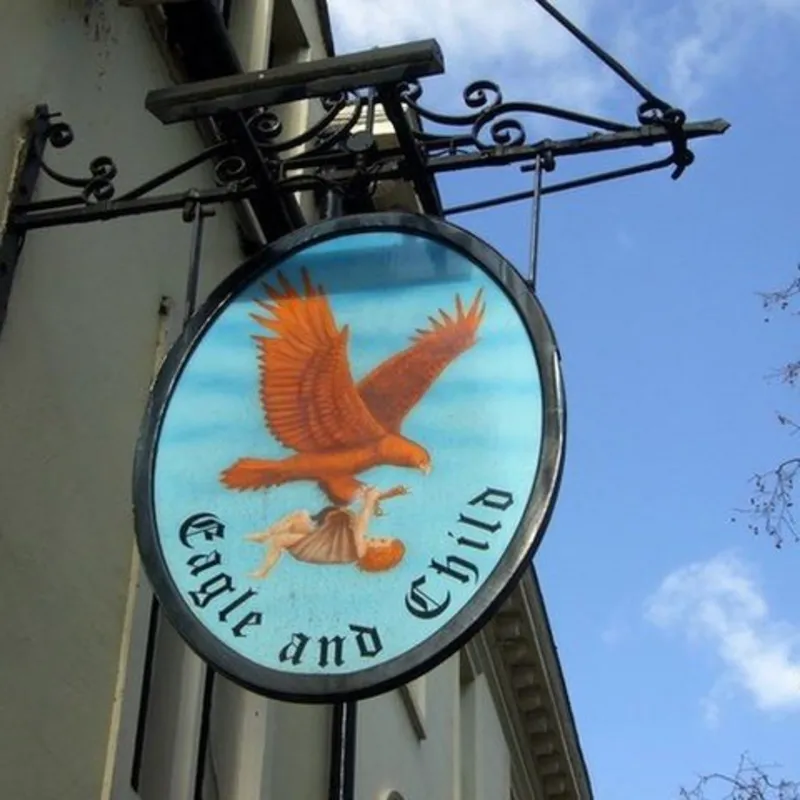Personal update: I have been sick. I don’t like to bring attention to it but I am medically disabled due to autoimmune conditions. One of them responded so well to treatment that I went into remission for around four years. Then in the autumn of 2022, I became very sick and had to increase my infusions from every eight weeks to every four weeks. A year later, last November, I started feeling unwell again and in December it became unbelievably bad (sparing y’all the grisly details but it’s your general supernatural body horror type thing: The Exorcist (1973) meets Alien (1979) meets The Mummy (1999)). It took weeks to return to baseline. Then it happened again in January and February. My drugs were switched in March, but it happened again that month and in April too. I had about a week where I really challenged myself to “work” through the horrors, a mistake– in May, this month, it happened twice, only one week apart. At the moment, I am getting through the day, just barely, because of zofran (an anti-vomiting drug designed to dissolve on the tongue but tastes like bile… what sadistic drug engineer came up with that? I want names!). Some days are better than others but I haven’t been up to filming myself or editing videos. I have so much unpublished research for y’all but I hold off on publishing posts here because I want to publish them with the videos. But for my own self esteem I need to post something. So sans video for now:
Pieter de Hooch and the Merry Company
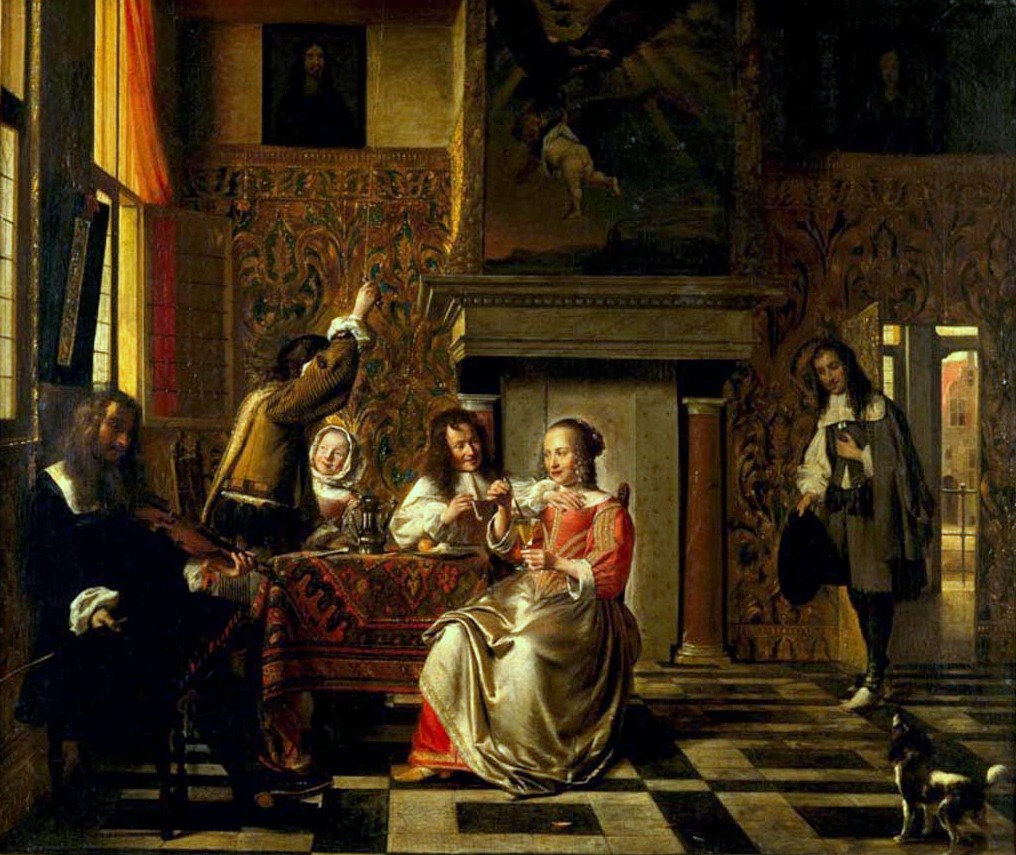
Pieter de Hooch (1629-1684) was a Dutch Golden Age painter known for his domestic scenes, many feature infants and infant care. A Merry Company, is a classic Dutch scene, a group of people gathered around a table laughing, playing music, and drinking (creepy groper optional). Some of these Merry Company paintings include infants and young children, for example this one by Jan Steed shows and infant with a grandmother figure. But in Pieter de Hooch’s Merry Company, the only baby is the one in the painting above the mantel piece. The painting needs cleaning but to me this looked like a vulture carrying off an infant over mountains. Scenes from mythology were popular subjects for paintings so I tried to find a story involving a vulture and a baby. Nothing. Just redirects for storks and a crane, but only the crane was associated with trying to carry off a baby instead of delivering one:
In Greek mythology, Hera, jealous codependent wife extraordinaire, turned Gerana, the queen of the Pygmies, into a crane (some sources say because she was one of Hera’s husband’s innumerable side chicks). Gerana was a new mother at the time and so tried to carry away her baby but her family didn’t know the crane trying to take the baby was Gerana and so chased her away.
Bird is the Word
So I tried “bird” instead of vulture and oh boy. There was an excellent Vice article from 2012, the year of the infamous Montreal baby-snatching eagle hoax. They noted a West African story of a bird that will test a mother’s love for her child versus her greed by stealing a baby but leaving gold and jewels. If the mother refuses the bribe for her baby, the baby is returned safely but if the mother is found to be greedy that baby pays the price. That doesn’t seem fair, does it? If I were that bird and some mother preferred gold and jewels to infant’s welfare, I’d take both kid and jewels away, find a loving family to raise the baby and invest that wealth for the kid’s education. Shoot.
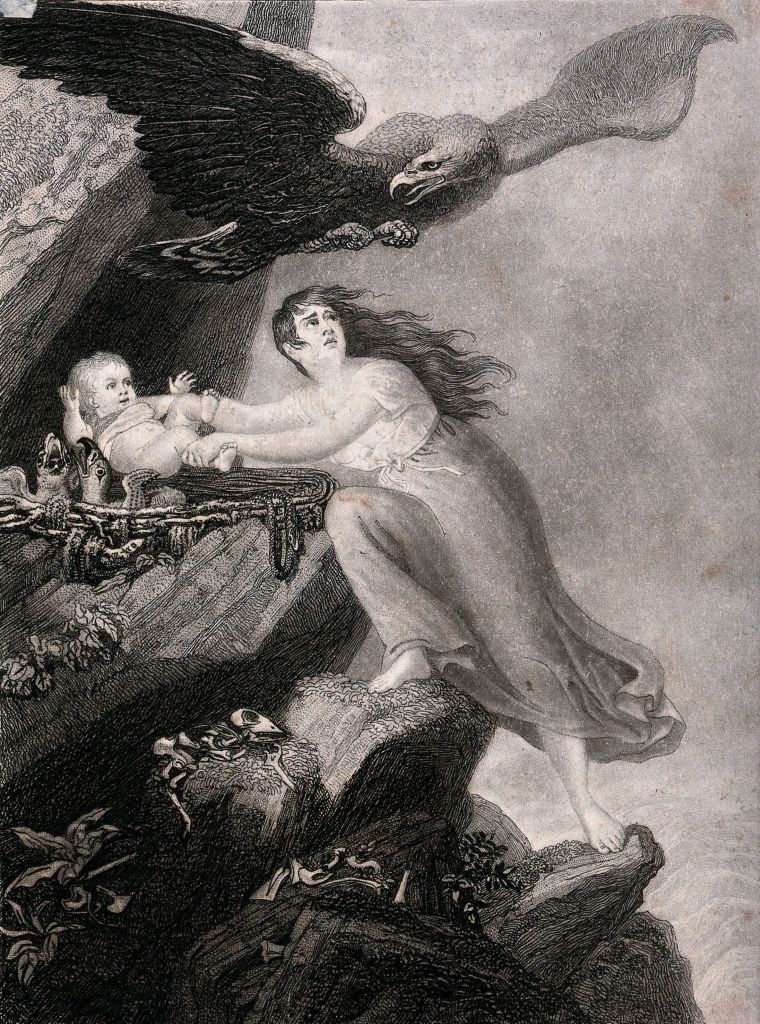
In The News
But I digress. The Vice article also noted that there were news reports of babies and children being snatched by eagles. So I went to the various newspaper archives, and started digging. Here is a selection (not all have happy endings):
One Christmas Eve, 1869 in Meigsville, Tennessee, a toddler, just learning to walk, managed to get out of his trundle bed and into the front yard. A servant girl saw the “great grey eagle” swoop down and hook its talons into he boy’s clothing and sail away over the forest. The girl ran into the woods following the path of the eagle, until she reached a clearing of marsh and fields just before the Cumberland River. She saw the bird land and at that moment a nearby hunter shot his gun, spooking the eagle who lifted into the air without the boy. The girl began screaming to the hunter, who reloaded his gun. Meanwhile, the eagle hadn’t forgotten about it’s prey, it began circling low. The girl reached the hunter but was in such a panic she couldn’t explain the situation but the little boy began to cry. The hunter ran to the child, who had torn clothes but was otherwise unhurt, and brought the baby to the servant girl. They returned to the house where the parents had noticed the baby missing and were in a panic trying to find him. “There [was] laughing and crying enough when the wanderers returned, and the wonderful voyage of the little fellow was explained.” (Star Christchurch, 31 Dec 1869)
On September 22, 1888, William Beattie left his two children, a five year old and a two month old in his dug-out on the Cimarron River, just past the border of Kansas, to go to work. At noon, he returned home to find his five year old daughter alone and crying. She had put the baby in the yard while she did chores inside, when she heard the cry she came out to see the baby flying away. Beattie summoned his neighbors to track the eagle, within the hour the eagle was found and killed but the baby hadn’t survived. (NYTs 25 Sept 1888.)
On January 17th, 1908 in Goldsborough North Carolina, William Woods shot and killed an eagle as it was flying away with the baby of Mr and Mrs Wood. William had seen the eagle swoop down and struggle to fly away with the baby, and immediately grabbed his rifle. To prevent hitting the baby he struck the wing of the bird, which descended slowly and the a baby was saved.. the eagle was not. (NYTs 18 Jan 1908)
On August 10th, 1928 in Lubec, Maine, while father Guy Lyons was at work, his wife and sons had a trying day. The kids were outside playing when mom heard screaming. She looked outside to find Big Brother (5 years old) grasping Little Brother (2 years old) by the ankle as an eagle with a seven foot wing span tried to carry him off. When mom came into the yard the bird let go and flew into a nearby tree to wait (literally, it sat there all day, waiting). The article noted that eagles were protected by Federal laws so there was no vigilante justice for this bird, or its kin, who apparently were “numerous this season” and had “raided several poultry” yards. (NYTs 11 Aug 1928)

In 1931, near the Finnish-Russian border a farmer’s child disappeared while playing outside his house. When he couldn’t be found many suspected he may have been carried off by an eagle (how common was this?!) but it wasn’t until lumberjacks felled a tall pine tree in late January 1933 that a toddler’s skeleton and tattered clothes were found in an eagle’s nest. Absolutely heart breaking. (NYTs 29 Jan 1933)
In 2001, beginning on August 17th, a bald eagle began terrorizing beach goers in Salisbury New Hampshire. The eagle had a six-foot wingspan and had injured three-year-old Kayla Finn, who was playing football. Once captured by animal control the bird was identified as one recently released from a wildlife reserve in North Carolina. (BBC 23 Aug 2001).
On Wednesday July 6th, 2016, at Alice Springs Desert Park in Australia, an eagle tried to carry of a 6-8 year old boy, during a bird show! Terrible PR. All the other birds are so embarrassed. The poor kid (and his mum and the other guests) was terrified and injured in the attack, including a cut to his face. (BBC 12 July 2016)
Mystery Solved
But all of these stories were from well after Pieter de Hooch’s painting. Why would he paint something like that unless there was preexisting story? Frustrated, I told a friend what I was researching, sharing clips from a 1908 silent film Recused from an Eagle’s Nest, about a lumberjack whose baby gets snatched by an eagle. The special effects are delightful.
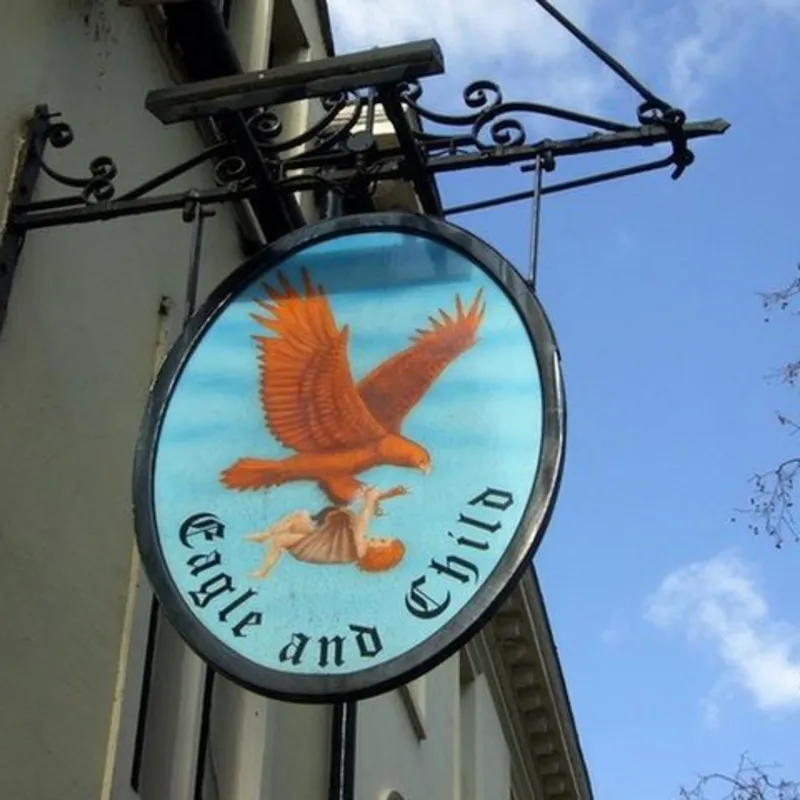
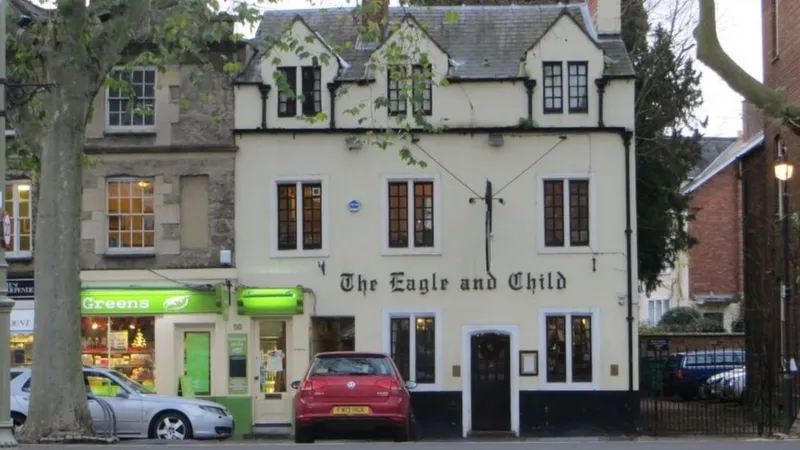
Just as I was discovering that there is a bar in Oxford (UK) called the Eagle and Child, where C.S. Lewis and J.R.R. Tolkien are supposed to have met, my friend messaged me with Rembrandt’s painting of Ganymede’s abduction by Zeus in the form of an eagle. Zeus liked the boy and decided he would be his cup-bearer on Mt Olympus so he snatched him. Mystery solved. It fits the scene in Pieter de Hooch’s painting: no kids allowed, unless they’re serving drinks!
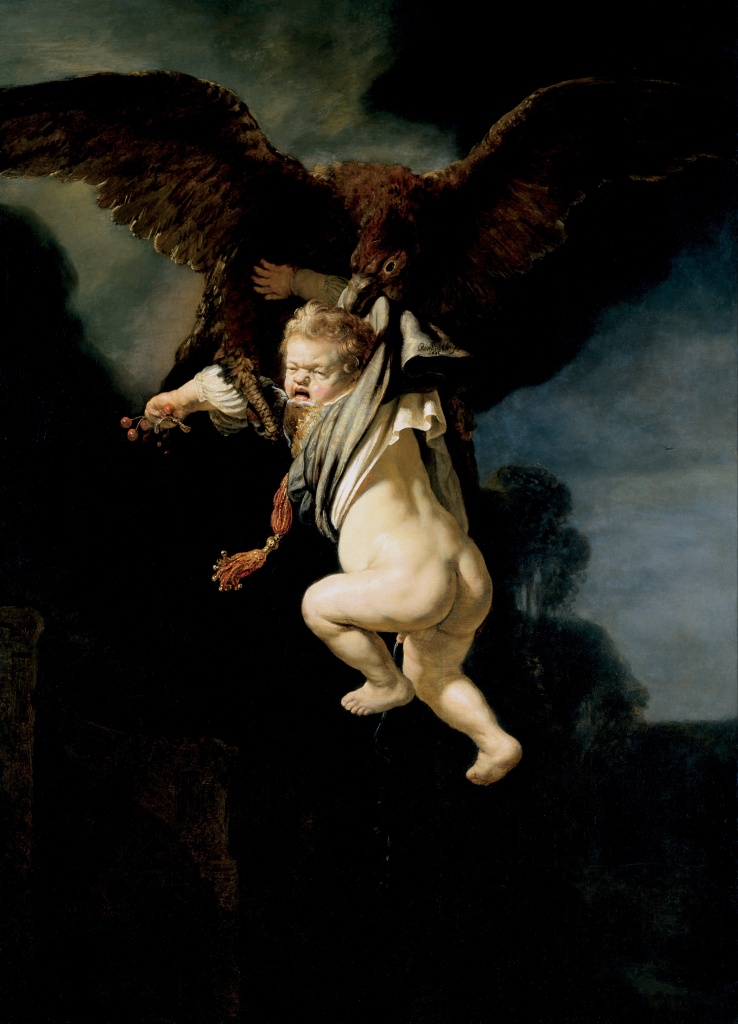
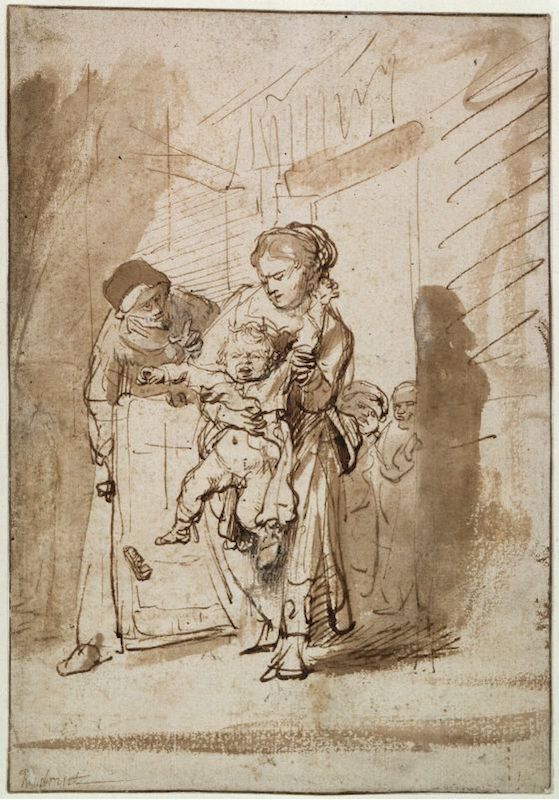
Beyond a shapeshifting-god’s aggressive home staffing solutions, the lesson of the Eagle and Child is to be aware of birds of prey when you’re enjoying the outdoors with your tiny humans or even your pets. The mystery solving friend noted how a bird swooped for his fully grown schnauzer but thought better of it at the last second, and he was completely unaware until some other dog walkers caught up to tell him what they saw.
After Thoughts
I didn’t find news articles about eagle attacks during the later half of the 20th century (doesn’t mean it didn’t happen) and it occurred to me that populations of eagles and other birds of prey were significantly reduced not only due to loss of habitat but to DDT, a pesticide used from the 1940s through 1972 in the US to reduce insect borne diseases, but which accumulated in wildlife like fish, which eagles ate, and resulted in fragile egg shells. Its possible that simply having fewer eagles overall reduced the incidence of eagle-human encounters. DDT has also had impacts on human health but that will have to wait for another time.
Sources:
Estes, Adam Clark. 19 Dec 2012. “A Brief History of Birds Stealing Babies.” Vice.
BBC.
Newspaper Archive.
New York Times Archive.
Wellcome Collection.
Wikipedia.
YouTube.

